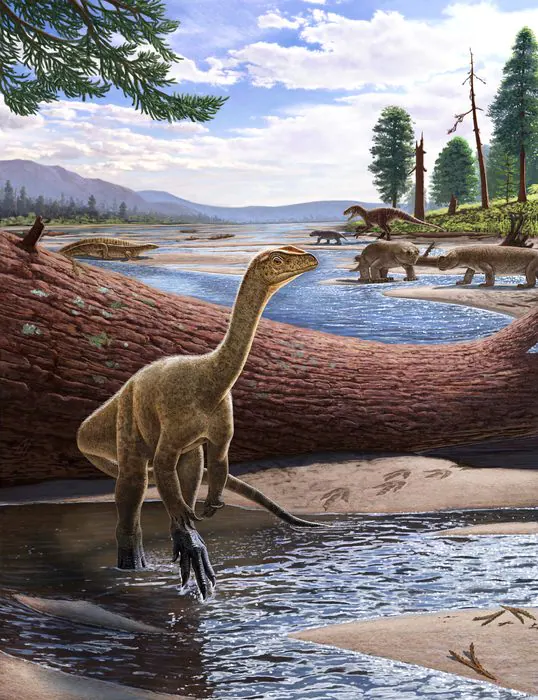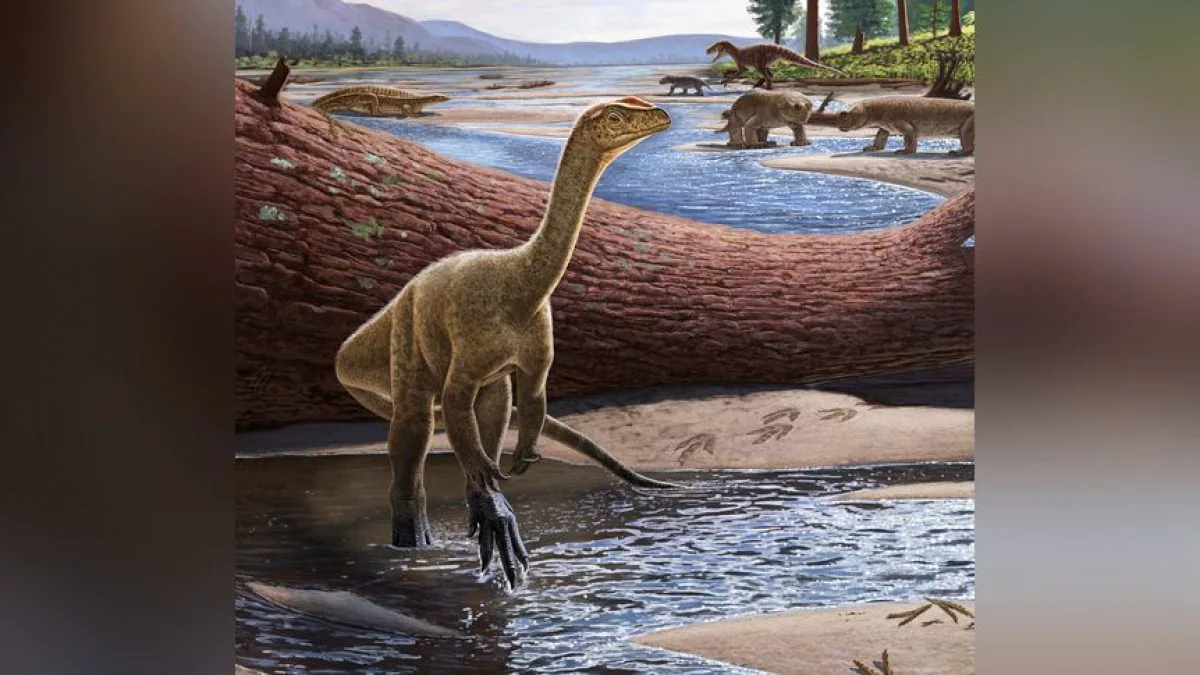235-million-year-old dinosaur fossil discovered: it is the oldest in Africa
Paleontologists have found a 235-million-year-old dinosaur fossil in Zimbabwe. Mbiresaurus raathi is one of the oldest ever found in the world.
During a series of excavations conducted in Zimbabwe starting in 2017, the fossil of the oldest dinosaur was never discovered in Africa and is one of the oldest ever. It is a small sauropodomorph - a group of dinosaurs to which the gigantic “long necks” belong - that lived approx 235 million years ago in the Late Triassic when on Earth there is a single, huge supercontinent known as Pangea.
The first fossil remains emerged five years ago in the thriving formation of Pebbly Arkose in the north of the African country, but only today the excavation works have been completed, also due to the COVID-19 pandemic which hindered the movements of paleontologists.
To discover and describe the small sauropodomorph dinosaur, scientifically classified under the name of Mbiresaurus raathi, was an international research team led by scholars from Virginia Tech of Blacksburg, who collaborated closely with colleagues from the National Museums and Monuments of Zimbabwe in Harare, the Department of Geology and Paleontology Museum of Natural History of Zimbabwe, the Chipembele Wildlife Education Center, of the Department of Biology of the University of Sao Paulo in Brazil and other institutes.
The researchers, led by Professor Christopher T. Griffin, a lecturer in the US Department of Geological Sciences, conducted the excavations in a formation that was once a lush ecosystem crossed by a river. A very rich one was found here in prehistoric biodiversity made up of fascinating creatures like I cynodonts (mammalian precursors), reptiles with curious beaks called dinosaurs, armored crocodiles, and many others.
Among the various fossils emerged that of the Mbiresaurus raathi, so named in homage to the Mbire people, who once ruled over this region, and to Dr. Michael Raath, a South African paleontologist who worked extensively on this and other formations on the continent.

Fortunately, the dinosaur fossil is almost complete, as only parts of a hand and skull are missing. The dimensions determined by the researchers are 2 meters long and just 50 centimeters high at the side. The weight was included between 10 and 30 kilograms.
It was tiny compared to giant sauropodomorphs such as diplodocus, apatosaurs, and brachiosaurs that lived in the heart of the Mesozoic. Suffice it to say that some of these giants, such as the Patagonian mayorum, almost reached 40 meters long and at a weight of approx 60 tons. But the early Triassic dinosaurs were smaller than those known to the general public.
A magnificent Jurassic fish fossil was discovered in an agricultural field: it seems to jump from the rock
Since there was only one continent on Earth in the Late Triassic, it is no wonder that the dinosaur found in Zimbabwe is similar to other sauropodomorphs found in South America, which over 200 million years ago was "hooked" to Africa. Although it was a single land platform, however, the dinosaurs were not distributed everywhere; according to the team led by Professor Griffin, this was due to real climatic barriers (between wet and arid areas) which prevented the passage of animals in certain areas and latitudes.
At the moment the Mbiresaurus raathi fossil is in the Virginia Tech laboratories for cleaning and conservation operations; once the restoration work is complete and the study will be transferred to the Natural History Museum of Zimbabwe in Bulawayo, along with all the other recovered fossils. The details of the research "Africa's oldest dinosaurs reveal early suppression of dinosaur distribution" have been published in the authoritative scientific journal Nature.



